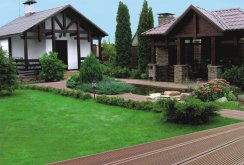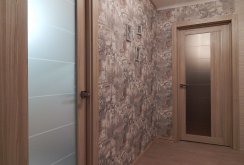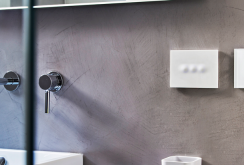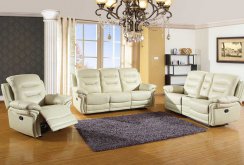Warm floor in the interior: basic parameters
Radiator heating works thanks to the convention. The air in the lower part of the room heats up and, accordingly, rises to the upper part. The air that cools down above, on the contrary, descends and heats up again. As a result, the temperature on the floor is always lower than above. In the case of a heated floor, everything happens the other way around: in the lower part of the room, the air heats up and gradually rises to the upper part, therefore, the temperature at the floor is always higher than at the ceiling. In addition, a kind of heating has a huge heat transfer, which mainly depends on the size of the heating element. You can install a warm floor in any room, but most often it is used in the bathroom. This type of heating adds comfort and creates a pleasant feeling after taking a bath. Compared to other rooms in the house, the bathroom always has moist air, the warm floor contributes to its quick drying and prevents the appearance of mold on the surfaces of walls and ceilings.Kinds
There are various types of underfloor heating.Water
For heating, hot water is used, which circulates through pipes located under the floor. The water floor is most in demand, it heats the room well and is easy to install. Tubes are placed under the concrete screed and a coating in the form of linoleum, tiles, etc. is placed on top. The only drawback of this floor is that it cannot be used in buildings with a centralized heating system.Electric
This option is most popular in countries where the climate is mild and warm. The heating system is arranged in this way: in the screed under any floor covering there are heating sections and mats in which the heating cable is placed. Electricity comes to him through a thermostat. The disadvantages include the appearance of electric and magnetic fields in the building. In addition, the cost of electric energy is significantly increased.Film
The technological basis of this variety is infrared radiation.In this device, the heating element is a very thin film with graphite strips soldered into it with copper and silver conductors. An electric current through the thermostat is suitable for the conductors. This device has several advantages: excellent energy efficiency, ease of installation, the ability to install under any floor covering, bypassing placement in the screed. Installation of a film floor significantly reduces energy consumption due to the fact that it is not necessary to heat concrete. In addition, the film can not be laid throughout the room, but only in some places. The main disadvantage of the film floor is its high cost. Each type of underfloor heating has its own advantages and disadvantages, so only after understanding, you can decide on the conclusion.Floor coverings
To effectively heat the room, floor coverings must have good thermal conductivity. The most suitable flooring:- Porcelain tile. It conducts heat well, but because of the high heat transfer, powerful heating is needed. When choosing a tile on a heated floor, you should use powerful heaters or make intervals when placing pipes for a water floor the most frequent.
- Vinyl or PVC materials. These coatings should not be installed on warm floors. When heated, the materials swell, while washing, gaps appear.
- Laminate. The material is well suited for underfloor heating because of its dense structure, which allows heat to pass through. It is very important that the installation is carried out only on a dry floor. A moisture repellent film is glued on the front surface of the laminate, but the wrong surface easily absorbs fumes.
- Linoleum. The option is not the best, although some varieties are quite suitable for covering on a warm floor. These include species that do not have a base or thin, in which the base is smooth. They have a fairly large thermal conductivity. When using linoleum as a coating on warm floors, there is a temperature limit, not higher than 27 degrees. Otherwise, the coating will become soft, shapeless and change color.
- Parquet. Not the best choice, since the material is characterized by poor thermal conductivity. Although the wood will not deform, crack or form cracks, the heating efficiency will be small. Consequently, wood is not suitable for basic heating, but its use adds comfort.
- Carpet. The most inappropriate option. The material is an excellent heat insulator, which does not combine with a warm floor. There are short-haired varieties that can be used, but rather only for comfort.
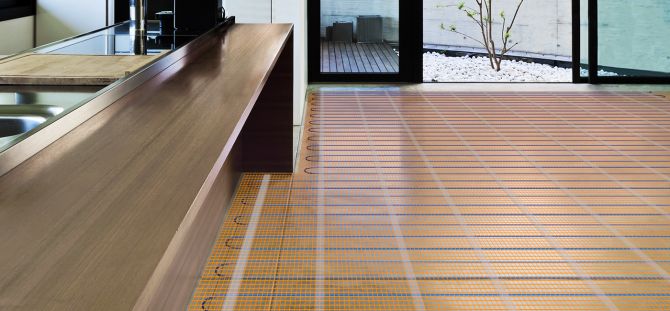
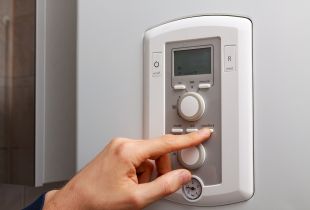 What thermostat to choose for a warm floor?
What thermostat to choose for a warm floor?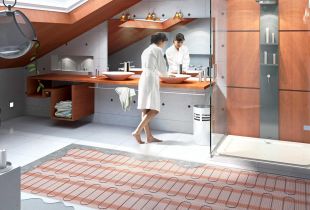 Warm floor in the bathroom: design features (20 photos)
Warm floor in the bathroom: design features (20 photos)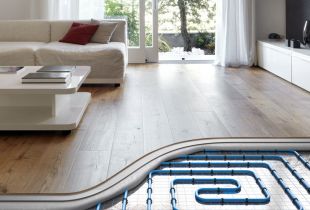 Water floor heating: advantages and features (22 photos)
Water floor heating: advantages and features (22 photos)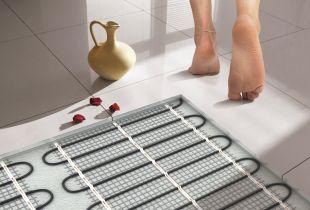 Electric underfloor heating - comfortable temperature all year round (25 photos)
Electric underfloor heating - comfortable temperature all year round (25 photos)

